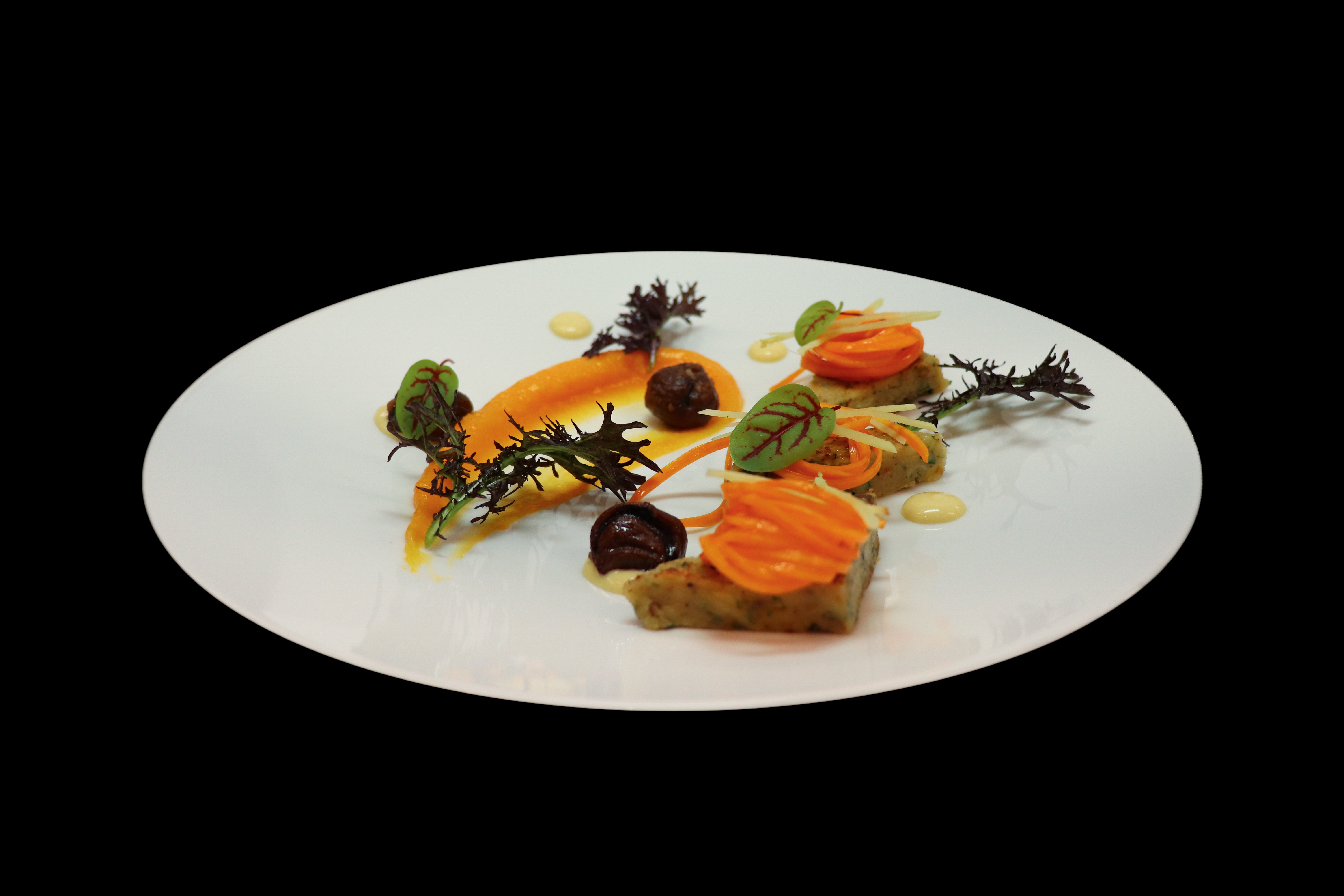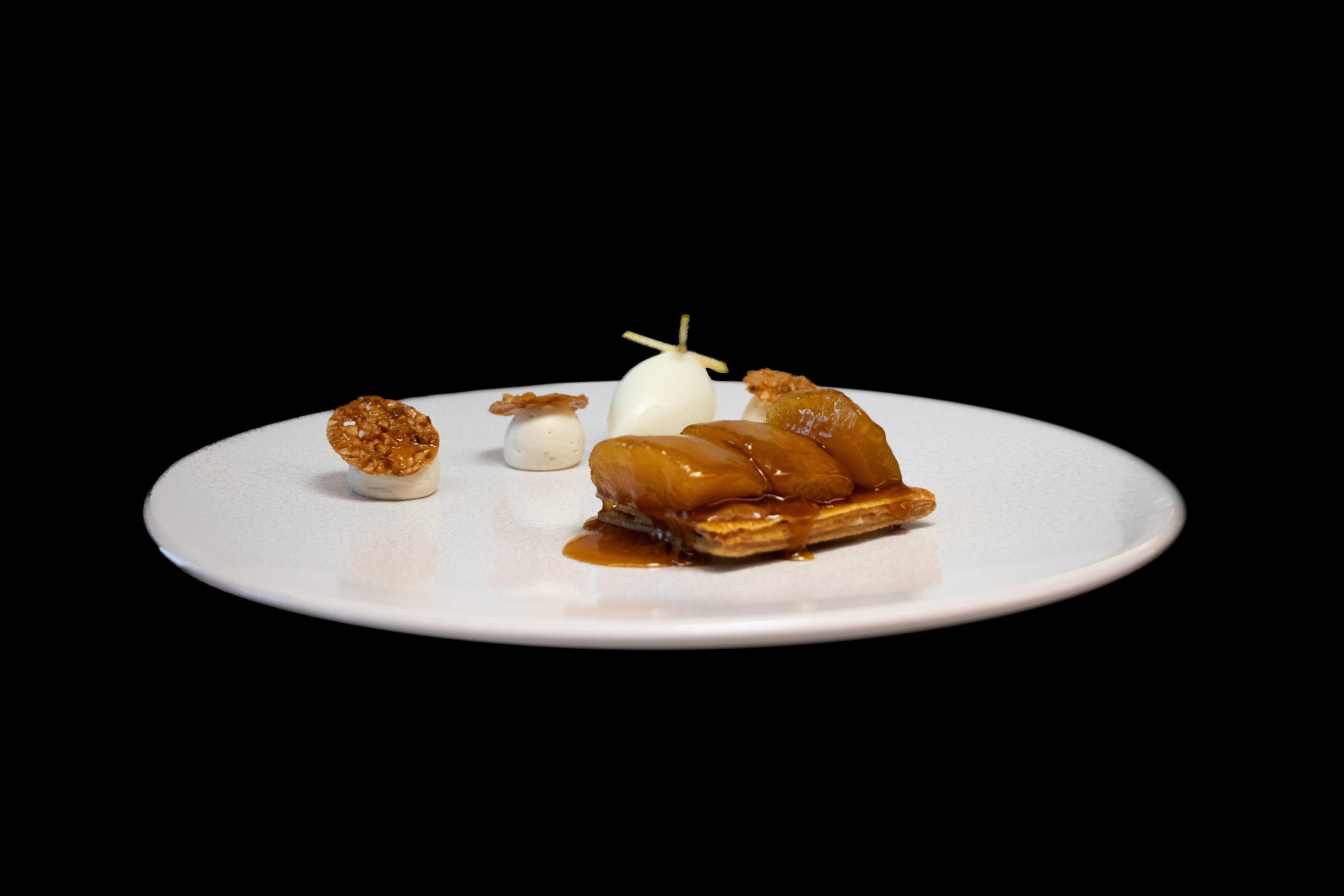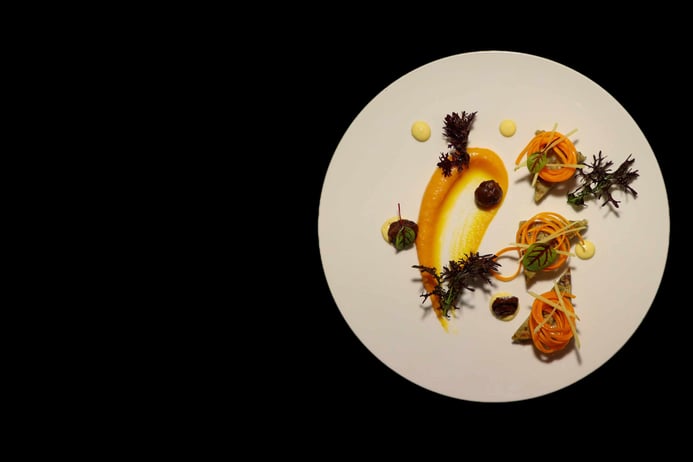EHL’s Institute of Nutrition R&D presents the season on a plate with a nutritious and delicious vegetarian menu to delight foodie fans of all types. As Hippocrates famously said, “Let food be thy medicine and medicine be thy food”, here we are reminded that behind many seasonal recipes lie specific healing properties to help us best align with the time of year. Enjoy your meal as well as your health!
Yellow, orange and red, the swirling leaves of the trees reflect the fruits and vegetables of autumn. It's the dance of the cucurbits! The orange sweetness of butternut squash is joined by the piquant flavor of ginger to warm our taste buds and bodies. Rich in carotenoids, whereby its color, squash is interesting for its anti-inflammatory virtues and helps maintain a healthy immune system. Carotenoids are powerful antioxidants. As a result, squash helps reduce oxidative stress and its seeds are particularly rich in estrogens. Most importantly, carotenoids are fat-soluble. In other words, to be absorbed by the body they need lipids, so after steaming add a drizzle of vegetable oil. Dense in water and low in protein, squash is low in calories and salt, and can easily replace sugar in pastries. Rich in fiber and carbohydrates, it helps regulate blood sugar levels and quickly brings the feeling of satiety while helping to nourish the microbiota.
As for ginger, its pep is due to the gingerol it contains. A powerful anti-inflammatory, it relieves congestion in the respiratory tract, so keep it handy for the first cold snaps. However, migraine sufferers beware, ginger is not recommended for you.
A drizzle of walnut oil, rich in omega 3, enhances the flavor of butternut squash. Let's get on with the gentle dance of the senses! Chestnuts, slowly boiled in a bath of herbs, will transport the aromatic molecules. Then, slowly roasted, they give off their sweetness.
Autumn kicks off with the waltz of mushrooms, such as oyster mushrooms and shiitake mushrooms, which contain numerous polysaccharides, rich in anti-cancer antioxidants and, above all, antimicrobial and immunomodulating properties. Just before facing winter and its many viruses, they help regulate the immune system.
Still with the autumnal hues, we end this delicious meal with a flambéed Boskoop apple and goat's milk flower ice cream, rich in calcium, containing less casein and more whey protein than cow's milk.
All the recipes and ingredients are for 4 people.
Main course: Oyster mushroom and shitake subric, butternut purée and roasted chestnut
For the subric
- 100g Etivaz cheese
- 100g yellow oyster mushrooms
- 100g fresh shitake
- 2 pieces shallot
- 30g flat-leaf parsley
- 1 egg
- 100g sourdough bread milk
For the side dish
- 400g chestnut
- 100g butternut squash
- a few leaves of red mizuna and vene cress
- Walnut oil
- Fleur de Sel salt
For the butternut squash purée
- 400g butternut squash
- 40g walnut oil
- 3.2g salt
For the emulsion
- 1 egg
- 125 mL walnut oil
Preparation
Soak the bread in milk, spin dry and blend with the egg, grated etivaz, shallots and flat-leaf parsley.
Clean the mushrooms, chop them and add to the previous mixture. Spread the mixture on a baking sheet to a thickness of 5mm, then bake in a steam oven for 10 minutes at 90°C. Cool, then cold-cut into the desired shape before sautéeing quickly in a frying pan or plancha to color.
Steam diced butternut for 20 minutes. Blend with salt and season with walnut oil.
Cook one soft-boiled egg. Blend in walnut oil like a mayonnaise.
Bake chestnuts in the oven.
Make raw butternut spaghetti, season with a drizzle of walnut oil, fleur de sel and grated ginger.
Presentation
On a flat plate, dress according to your desire.

Dessert: Apple puff pastry, vanilla whipped cream and sheep's milk ice cream
For the apple puff pastry
- 80g spelt puff pastry
- 200g boskoop apples
- 40g caramel powder (12g glucose, 25g sugar, 7g water)
- calvados
For the hazelnut nougatine
- 18g butter
- 7g milk
- 7g glucose
- 22g sugar
- 7g hazelnut
For the vanilla chantilly
- 100g cream 35% fat
- 7g sugar
- ¼ vanilla pod
For the sheep's milk ice cream
- 100g sheep's milk
- 8g powdered milk
- 15g sugar
- 5g glucose
- 5g 35% cream
Preparation
Cut 8x6cm rectangles of puff pastry. Bake for 30 minutes at 170°C. Cook glucose, sugar and water at 180°C, then pour onto baking paper. Cool and blend into powder. Bake the apples with the caramel powder for 20min at 85°c in a steamer. Cool overnight, then flambé with Calvados.
Whisk all ingredients together until well chilled.
Bring milk, butter and glucose to the boil. Stir in sugar and recook at 106°C. Roll out thinly on greaseproof paper and sprinkle with chopped hazelnuts. Bake for 8 minutes at 175°C. Cut into 3.5cm circles.
Heat milk, cream and milk powder to 50°C. Add sugar and glucose. Bring to the boil. Blend, then cool rapidly. Leave to mature for 12 hours. Turbinate in an ice-cream maker.
Presentation
- Place rectangles of baked puff pastry on a flat plate. Add apples and cooking juices.
- Top with whipped cream and nougatine cracker.
- Finish with a quenelle of ice cream.






